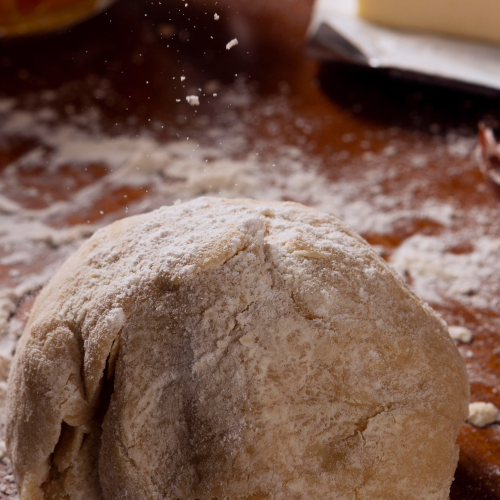Instructions:
Prepare the Poolish (Starter):
In a bowl, dissolve 15 g of fresh brewer's yeast in 100 g of lukewarm water.
Add 100 g of Manitoba flour and mix until smooth.
Cover the bowl with a clean kitchen towel and let it rest in a warm place for about 1 hour, or until doubled in size.
First Dough:
To the risen poolish, add 1 large egg, 200 g of all-purpose flour, 120 g of granulated sugar, and 65 g of softened unsalted butter.
Mix the ingredients until a smooth and homogeneous dough forms. You can use a stand mixer with a dough hook attachment or mix by hand.
Cover the bowl and let the dough rise in a warm place for 2 hours, or until doubled in size.
Second Dough:
To the risen first dough, add 1 large egg, 40 g of granulated sugar, 100 g of all-purpose flour, 75 g of softened unsalted butter, the zest of 1 orange and 1 lemon, 1 tablespoon of rum (if using), 1 teaspoon of vanilla extract, and a pinch of salt.
Knead the mixture until the dough is smooth and elastic. If the dough is too stiff, add a little milk, one tablespoon at a time, until the desired consistency is achieved.
Cover the dough and let it rise again in a warm place for about 2 hours, or until doubled in size.
Shaping:
Once the dough has risen, transfer it to a lightly floured surface.
Divide the dough into two equal portions and shape each into a round loaf.
Place the loaves on a baking sheet lined with parchment paper.
Cover them with a kitchen towel and let them rise for another 1-2 hours, or until they have visibly increased in size.
Scoring and Glazing:
Preheat your oven to 180°C (350°F).
In a small bowl, whisk together 1 egg yolk and 1 tablespoon of milk to create the glaze.
Gently brush the top of each loaf with the glaze.
Using scissors, make three cuts on the top of each loaf, forming a Y-shaped pattern. This traditional scoring allows the bread to expand properly during baking.
Baking:
Bake the loaves in the preheated oven for 20 minutes.
Then, reduce the oven temperature to 150°C (300°F) and continue baking for an additional 40 minutes, or until the loaves are golden brown and sound hollow when tapped on the bottom.
Remove the loaves from the oven and let them cool on a wire rack before serving.
Variations and Tips:
Flavor Enhancements: Incorporate dried fruits like raisins or candied citrus peel into the dough for added sweetness and texture.
Alcohol-Free Version: If you prefer to omit the rum, you can substitute it with orange juice or simply leave it out.
Dietary Substitutions:
Dairy-Free: Replace butter with a plant-based margarine and use a non-dairy milk for the glaze.
Gluten-Free: Use a gluten-free flour blend suitable for yeast breads, keeping in mind that the texture may differ from the traditional version.
